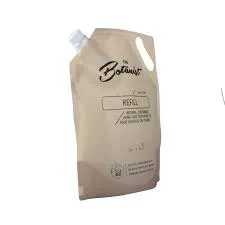- Afrikaans
- Albanian
- Amharic
- Arabic
- Armenian
- Azerbaijani
- Basque
- Belarusian
- Bengali
- Bosnian
- Bulgarian
- Catalan
- Cebuano
- chinese_simplified
- chinese_traditional
- Corsican
- Croatian
- Czech
- Danish
- Dutch
- English
- Esperanto
- Estonian
- Finnish
- French
- Frisian
- Galician
- Georgian
- German
- Greek
- Gujarati
- haitian_creole
- hausa
- hawaiian
- Hebrew
- Hindi
- Miao
- Hungarian
- Icelandic
- igbo
- Indonesian
- irish
- Italian
- Japanese
- Javanese
- Kannada
- kazakh
- Khmer
- Rwandese
- Korean
- Kurdish
- Kyrgyz
- Lao
- Latin
- Latvian
- Lithuanian
- Luxembourgish
- Macedonian
- Malgashi
- Malay
- Malayalam
- Maltese
- Maori
- Marathi
- Mongolian
- Myanmar
- Nepali
- Norwegian
- Norwegian
- Occitan
- Pashto
- Persian
- Polish
- Portuguese
- Punjabi
- Romanian
- Russian
- Samoan
- scottish-gaelic
- Serbian
- Sesotho
- Shona
- Sindhi
- Sinhala
- Slovak
- Slovenian
- Somali
- Spanish
- Sundanese
- Swahili
- Swedish
- Tagalog
- Tajik
- Tamil
- Tatar
- Telugu
- Thai
- Turkish
- Turkmen
- Ukrainian
- Urdu
- Uighur
- Uzbek
- Vietnamese
- Welsh
- Bantu
- Yiddish
- Yoruba
- Zulu
printing onto boxes
Printing onto Boxes The Art and Science of Packaging
In a world where first impressions matter, packaging plays a crucial role in capturing consumer attention. Among the various elements of packaging, printing onto boxes stands out as a powerful tool for branding, information dissemination, and aesthetic appeal. This article delves into the techniques, benefits, and trends associated with printing onto boxes, illuminating its significance in modern commerce.
The Importance of Box Printing
Box printing goes beyond mere aesthetics; it serves several essential functions. First and foremost, it provides crucial information about the product within. This includes important details such as usage instructions, ingredients, and expiration dates. In regulated industries, such as food and pharmaceuticals, clear and accurate printing is not just helpful; it’s legally mandated. Thus, effective box printing is indispensable for compliance and consumer safety.
Second, printing on boxes is a vital branding opportunity. Companies utilize graphics, logos, and taglines strategically to communicate their brand identity. Well-designed packaging can evoke emotions, convey values, and differentiate products in a crowded marketplace. Research has shown that consumers are more likely to purchase a product if the packaging is appealing, underscoring the importance of colorful, eye-catching designs.
Techniques of Box Printing
There are several methods used for printing onto boxes, each with its unique advantages and applications
1. Flexography This is one of the most common methods for printing on boxes, particularly in high-volume production. It uses flexible relief plates to transfer inks onto the substrate. Flexography is known for its speed and efficiency, allowing for large runs of printed boxes with consistent quality. It is ideal for packaging materials such as corrugated cardboard and paperboard.
2. Digital Printing An increasingly popular choice, digital printing allows for full-color, high-quality images and graphics. This method is particularly advantageous for short runs and custom designs, as it eliminates the need for extensive setup time and costs associated with traditional printing methods. Digital printing also enables businesses to personalize packaging, catering to specific customer preferences.
3. Offset Printing Similar to flexography, offset printing utilizes plates but is best suited for detailed images and text. It is often used for printing on rigid boxes and is known for producing high-quality prints. However, it typically requires larger print runs to be cost-effective.
printing onto boxes

4. Screen Printing This technique allows for vibrant colors and is often used for special effects, like metallic inks or textures. Screen printing is less common for mass production but is frequently used for custom orders and artistic designs.
Trends in Box Printing
As businesses evolve, so do their packaging strategies. Several trends are emerging in the field of box printing
1. Sustainability Growing environmental awareness among consumers is influencing brands to adopt more sustainable packaging solutions. This includes using eco-friendly inks, recyclable materials, and innovative designs that minimize waste. Printing technologies that reduce water and energy consumption are also gaining traction.
2. Minimalistic Designs Many brands are shifting towards minimalistic packaging. The focus is on clean lines, simple typography, and limited color palettes that resonate with modern aesthetics. Minimalism can enhance product visibility while reducing visual clutter, making a statement about the brand’s ethos.
3. Augmented Reality (AR) Some companies are incorporating AR into their packaging designs. Scanning a printed box with a smartphone app can unlock interactive experiences, offering additional product information or storytelling elements. This innovative approach not only engages consumers but also creates memorable experiences tied to the brand.
4. Customization With advancements in digital printing technologies, customization has become more accessible. Brands are leveraging this capability to offer limited editions, personalized packaging, and variations based on consumer data, creating a unique shopping experience that resonates with individuality.
Conclusion
Printing onto boxes is a multifaceted process that combines creativity with functionality. It plays a critical role in branding, information communication, and consumer engagement. As printing technologies continue to advance and consumer expectations evolve, businesses must adapt their packaging strategies to meet these challenges. Emphasizing sustainability, embracing innovative designs, and enhancing customer experience will be key to staying relevant in the ever-competitive marketplace. Ultimately, box printing is not just an afterthought; it’s an integral component of effective product presentation and marketing strategy.













